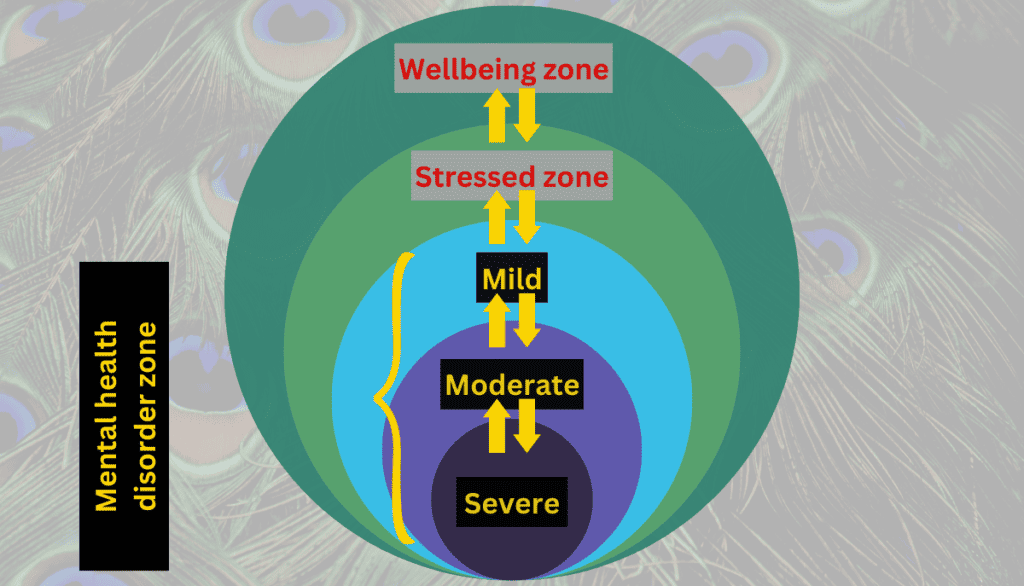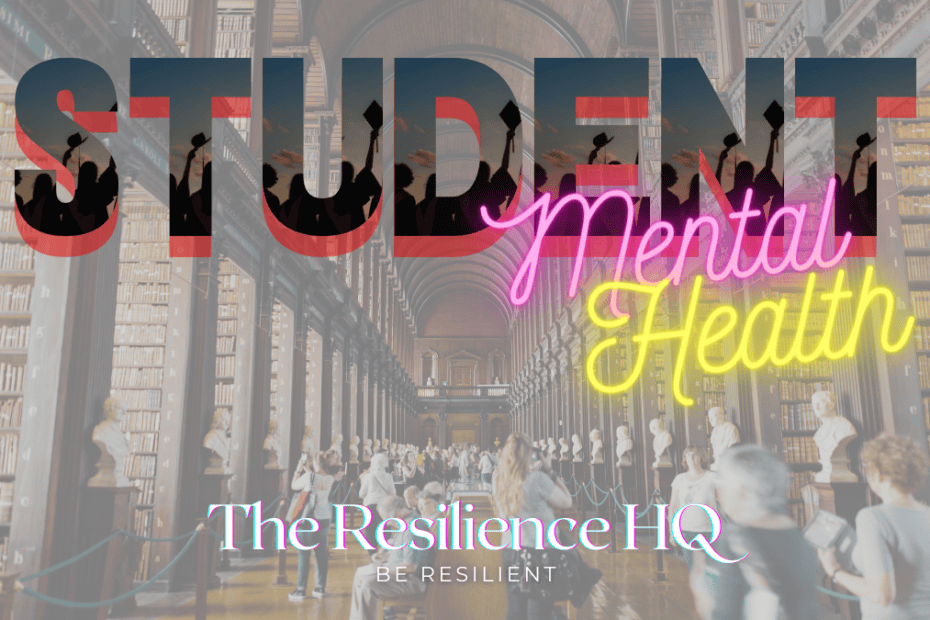Mental health issues are quite common among university students, and there can be various reasons behind this. These reasons have already been discussed in the first article of this series. In this article, we will focus on how students can identify the symptoms of mental health issues while studying at the university. By doing so, they can tackle the issue at an early stage and employ specific strategies to manage it, which can reduce the likelihood of the problem becoming more intense and leading to the development of mental disorders.
1. Specific symptoms of mental health issues
Recognising the early warning signs of mental health issues at university can be done in two ways. The first way is to identify the common symptoms of mental health disorders. This includes being able to recognise signs of anxiety and depressive disorders, as they are the most common. The second way is to monitor for changes in behaviour from baseline.
Anxiety symptoms
If you start noticing symptoms of increased tension, excessive worries, fear, increased heart rate, increased breathing rate, trembling, sweating and essentially a fear of something that you may or may not be aware of. These are the common signs of anxiety. Worrying all the time is an important symptom to recognise.
Different types of anxiety
If these symptoms are present in most situations, whether you’re in your own room by yourself or whether you’re in a lecture, then this is likely to be indicative of generalised anxiety disorder. But if the symptoms are specific to a place, for example, a social place like a restaurant, cafe or a classroom, then this is likely to be a specific phobia or social anxiety. These have been described along with other categories of anxiety in the first article.
Signs of depressive disorder
First of all, low mood that is much more frequent than before and much more persistent than before. The next symptom to look out for is the inability to enjoy activities also called anhedonia. These could be activities that you used to enjoy before but for some reason, you don’t feel them as pleasurable or as enjoyable as before. Sure, your mood may be slightly better doing these activities than when you’re not doing them but it won’t feel the same anymore. For example, if you’re seeing your friends, playing a sport or doing things or a hobby that you used to enjoy doing then this is also an early warning sign that you’re at risk of depression or the depression may have already started at a mild level. You need to do something about it.
Another early warning sign for depression is tearfulness or even if you don’t cry you might just feel that you have this feeling that you might cry. If you are crying for no reason especially when you’re all alone at night this is a very big marker of depression and cannot be ignored. Any thoughts of self-harm or suicide even if these are very mild or occasional is your subconscious telling you to take an action and get help now. These symptoms cannot be ignored.
Common Symptoms
- Feeling sad or down.
- Excessive worries or fears that is unusual for you.
- Confused thinking or reduced ability to concentrate or remember.
- Extreme mood changes of highs and lows.
- Withdrawal from friends and activities.
- Tiredness, low energy or not feeling refreshed despite the sleep.
2. Changes to baseline
The second method for recognising warning signs of mental health issues is to consider your baseline function. Think about what is normal for you in terms of how you feel, what activities you do, and how much you enjoy those activities. Changes from your baseline could indicate that something is not right, so you should look into it more closely and monitor it carefully. For example, you may have stopped seeing your friends, stopped eating or doing activities you used to enjoy, or started worrying all the time.
However, it is important to note that in the early stages of any mental health disorder, symptoms may be very mild and you might not notice any changes at all. Therefore, it is important to ask other people who know you well, such as your family, friends, or flatmates, to observe you and notice any changes in your behaviour or mood. They can give you an early warning sign that something may not be right, and you can monitor it closely and seek help early.
To maximise the effectiveness of this technique, it is important to have a number of people who know what you are generally like and can tell you if they notice any changes. It is also important to reflect on your daily activities and keep a record of this in a personal journal. This will help you notice any changes in your mood, thinking, or behaviour patterns. By recognising early warning signs, you can reduce stress or get help as early as possible.
In summary, this strategy is designed to detect early warning signs of developing mental disorders or stress levels and act on them early. As soon as you notice early symptoms, it is important not to ignore them and to use strategies to reduce stress or seek help as soon as possible.
What are the different stages of mental health issues?
Maintaining good mental health and general well-being is important for leading a happy life. However, there are several stress factors that can hamper our well-being and push us towards the stress zone. To avoid falling out of the well-being zone, we need to practice prevention and management strategies for stress, along with resilience strategies. Early recognition and action upon early warning signs of mild mental health problems can help prevent further deterioration. Seeking help from various sources is highly recommended at this stage.
If mental disorders have already developed, their severity can be reduced through self-help, stress management, or professional help, leading to the path of recovery. During this stage, it is crucial to adhere to the treatment plan and monitor progress regularly. Once recovery has been achieved, it is essential to take preventive measures to avoid future relapse. These measures include using recommended strategies and avoiding factors that led to the development of mental illness initially.
The following are the stages of the wellbeing-health spectrum in order:
- Wellbeing zone
- Stress zone
- Mild mental health difficulties (moderate then severe with loss of insight)
- Prevention
- Recognise warning signs
- Seek help: self help/family and friends help+university help (tutors, student support+counselling)+GP+online+Adult Mental Health Services etc
- Treatment
- Recovery-Engage with help
- Relapse Prevention

Summary
The article highlights the importance of identifying the early warning signs of mental health issues in university students. There are two ways to recognise these signs: identifying common symptoms of mental health disorders, including anxiety and depressive disorders, and monitoring changes in behaviour from baseline. Students should look out for specific anxiety symptoms, such as increased tension, excessive worries, fear, and trembling. They should also monitor changes in their behaviour, such as withdrawing from friends and activities or worrying all the time. It is important to recognise early warning signs to reduce stress and seek help as soon as possible.
Previous post on the topic: Student Mental Health Crisis in Universities
Next post on the topic: How to look after you rmental health at university?

Pingback: How to Take Care of Your Mental Health as a Student? - The Resilience HQ
Pingback: Student Mental Health Crisis in Universities - The Resilience HQ